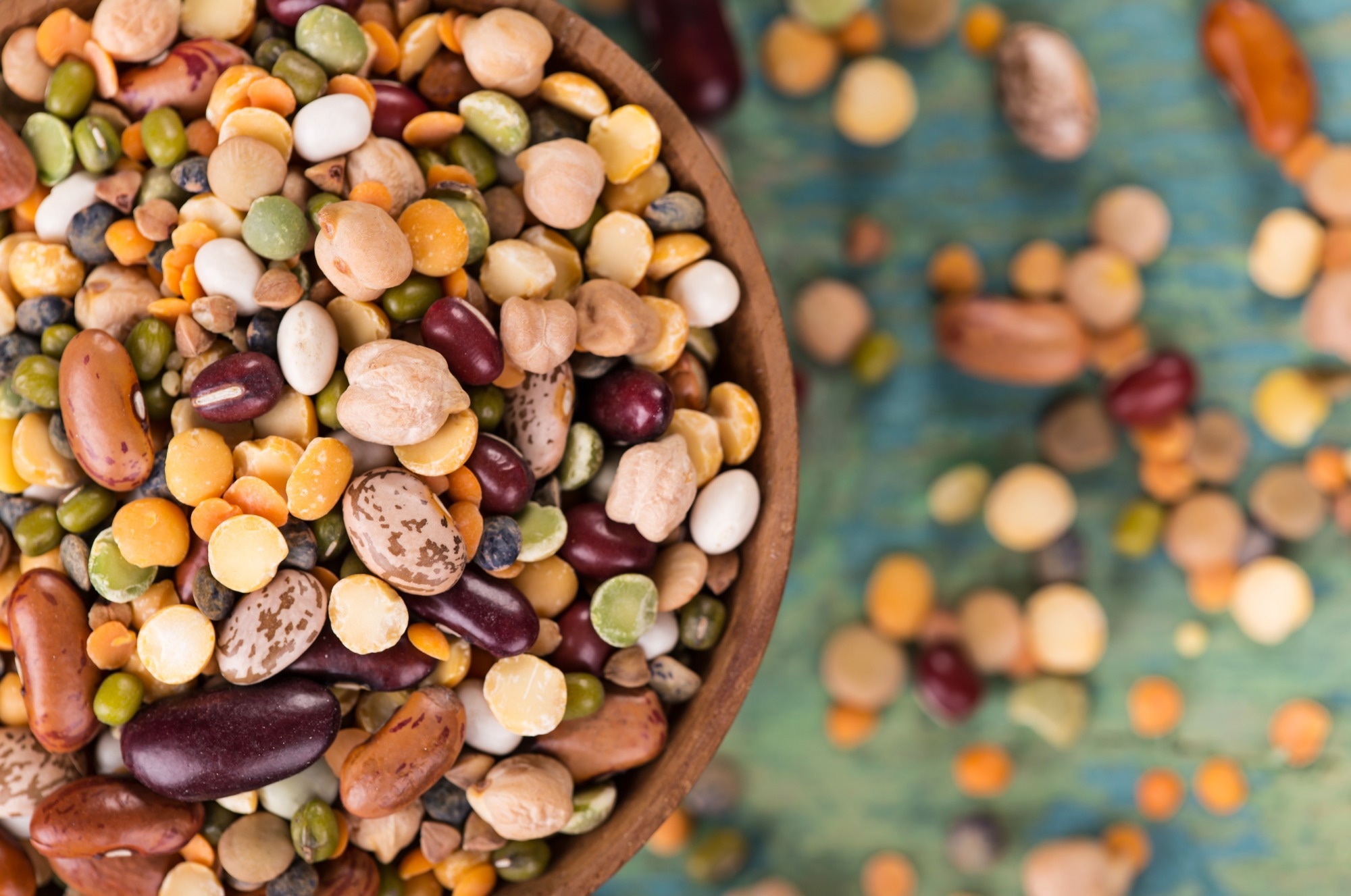The rise in the standard of living has parallelly increased the demand for animal-based protein. Previous research indicates that plant-based proteins provide additional benefits to humans over animal protein sources by reducing the risk of cardiovascular disease (CVD).
It is imperative to assess the quality of dietary protein to determine the benefits of both protein sources. Typically, protein quality is assessed following the protein efficiency ratio (PER), digestible indispensable amino acid score (DIAAS), or protein digestibility-corrected amino acid score (PDCAAS) methodology.
A recent Foods study discusses the methods available to assess protein quality while also assessing the benefits of plant proteins to human health.
 Study: Plant Proteins: Methods of Quality Assessment and the Human Health Benefits of Pulses. Image Credit: Lukas Gojda / Shutterstock.com
Study: Plant Proteins: Methods of Quality Assessment and the Human Health Benefits of Pulses. Image Credit: Lukas Gojda / Shutterstock.com
Protein quality assessment
Multiple methods, such as PER, PDCAAS, and DIAAS, have been developed to assess protein quality. The PER method, which is based on animal feeding trials, was first standardized to determine protein quality.
Following this method, weanling rats were subjected to a 10% crude protein diet for four weeks. The diet and weight of these rats were monitored closely.
The other control group of rats was subjected to a diet containing 10% casein for comparison. Upon completion of the trial, PER was calculated by dividing total weight gain by the total protein consumed.
A protein quality label has been developed in Canada based on adjusted PER values. If the protein rating is estimated to be at least 20, the food product qualifies for a “source” claim.
A food product qualifies for a ‘high source’ claim when the estimated rating is at least 40. PER can also be estimated using PDCAAS measurements using the following equation: PER = PDCAAS × 2.5.
In 1989, the Food and Agricultural Organization (FAO) and World Health Organization (WHO) jointly recommended PDCAAS to be the preferred method for protein quality assessment. This method has been adopted in the United States to determine protein quality. PDCAAS estimation is associated with multiplying the amino acid score (AAS) by the true fecal nitrogen digestibility (TFD%). When the calculated amino acid ratio is one or greater, it implies that the amino acid is not deficient in the tested sample.
Food qualifies as a ‘good source’ of protein when the PDCAAS- protein value is between five and 10 grams for every reference amount customarily consumed (RACC). When the final value is greater than 10 grams for every RACC, the food is regarded as an ‘excellent source’ of protein.
There are some similarities between the DIAAS and PDCAAS methods, such as the requirement of amino acid composition and a measure of digestibility for protein quality assessment. Despite these similarities, there are many dissimilarities between these two methods, including the calculation of digestibility.
Benefits of plant protein on human health
In most developed countries, the consumption of legumes is low, despite its health benefits. Several studies have shown that the consumption of legumes reduces the levels of CVD biomarkers; therefore, legume consumption could act as a dietary preventative measure for the incidence of CVD.
An experimental study revealed that eating one serving of beans daily reduces the risk of myocardial infarction (MI) by 38%. The National Health and Nutrition Examination Survey (NHANES) data indicate that the consumption of peanuts, dry beans, and other legumes lowers the risk of coronary heart disease and CVD.
Satiety is the feeling of “fullness” after a meal. An increase in the percentage of calories consumed as protein causes weight loss or maintenance.
Several studies have indicated that protein consumption increases satiety. As compared to rice and wheat, legumes increase satiety to a greater extent.
Legumes are also crucial for the growth and maintenance of muscle mass. However, distinctions in the amino acid composition of protein sources could lead to differential muscle protein synthesis.
An impairment in lipid metabolism can lead to hyperlipidemia, which is a notable risk factor for atherosclerotic CVD. As compared to animal-based proteins, plant-based protein consumption, particularly soy, lowers cholesterol levels, which significantly reduces the risk of coronary disease.
Several studies have shown that protein can lower serum lipid levels. As compared to casein control, purified chickpea and lentil proteins reduced plasma triglyceride and plasma very low-density lipoprotein. Likewise, the consumption of legumes also lowers high blood cholesterol levels.
Considering the nutraceutical qualities of legumes, current recommendations advise the incorporation of legumes into daily diets to manage triglyceride and cholesterol levels, which reduces the risk of cancer, hypertension, and CVD. In fact, several health organizations have recommended consuming legumes to regulate blood glucose levels.
One recent meta-analysis revealed that the consumption of legumes alone or as a part of a high-fiber diet improves several markers of glycemic control in people with insulin resistance and diabetes.
Colitis, inflammatory bowel disorder (IBD), and colon cancer are gastrointestinal disorders that are characterized by dysregulated inflammatory response pathways.
Notably, the consumption of legumes has been associated with changes in gut microbiota. For example, black and navy bean intake improved the biomarkers of colon barrier integrity by reducing protein fermentation and microbial carbohydrate fermentation.
Similarly, a mouse model demonstrated that introduction to bean flour improved colitis-related indicators of inflammation due to the presence of bioactive components, particularly phenolic compounds, and fermentation-derived short-chain fatty acids.